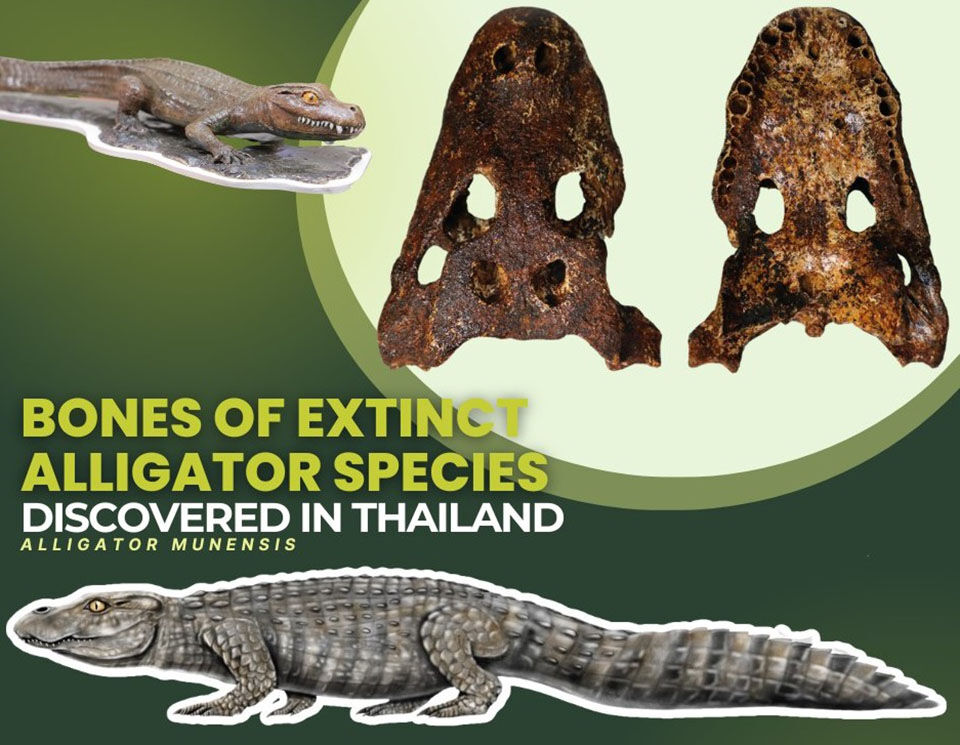Prehistoric alligator’s undercover mission: 230,000 years submerged in Thailand

Alligators’ ability to remain submerged for several hours is common knowledge among herpetologists but it came as a surprise to some that one in Thailand had managed to remain buried for 230,000 years.
The astonishing archaeological discovery was announced by Thailand’s Ministry of Natural Resources and Environment, which reported the unearthing of fossilised remains belonging to an extinct alligator species, referred to as Alligator munensis, or more affectionately, the Mun River Alligator.
These remarkable fossils were unearthed in Non Sung district, Nakhon Ratchasima, northern Thailand situated approximately 300 kilometres to the northeast of Bangkok.
An international research team, comprising experts from the University of Tübingen in Germany, collaborated with the Department of Mineral Resources and Chulalongkorn University to meticulously examine the fossilised skull, jaws, and various other components of this prehistoric creature.
In their quest for knowledge, they scrutinised the Non Sung fish pond, the site of the discovery, but only came across unsuitable bone fragments for analysis. It was during the close examination of a nearly complete alligator skull fossil that the stunning revelation unfolded – the team had stumbled upon a previously unknown alligator species.
This newfound species, believed to have existed no later than the Middle Pleistocene period around 230,000 years ago, was officially christened Alligator munensis in honour of the Mun River, which flows near the site of the groundbreaking find.

Distinguishing features of Mun River Alligators include their broader and shorter snouts, coupled with a higher skull, and nostrils positioned further away from the tip of their snout.
Notably, their tooth sockets are larger and fewer in number, suggesting adaptations for crushing crustaceans and freshwater molluscs. Judging from the size of the skull, researchers estimated that Mun River Alligators reached lengths of 1-2 metres.
This finding gains further intrigue when considering that there are only two extant alligator species worldwide – the American (Alligator mississippiensis) and the Chinese (Alligator sinensis).
The cranial features of the Mun River Alligator bear a striking resemblance to the Chinese alligator, hinting at a common ancestor shared between the Yangtze and Mekong-Chaophraya basins.
Geomorphic transformations, likely driven by the uplift of the Tibetan plateau, resulted in the divergence of this ancestral species into two separate populations, with climate fluctuations eventually leading to the extinction of the Mun River alligator.


Follow more of The Thaiger’s latest stories on our new Facebook page HERE.
Latest Thailand News
Follow The Thaiger on Google News:


























